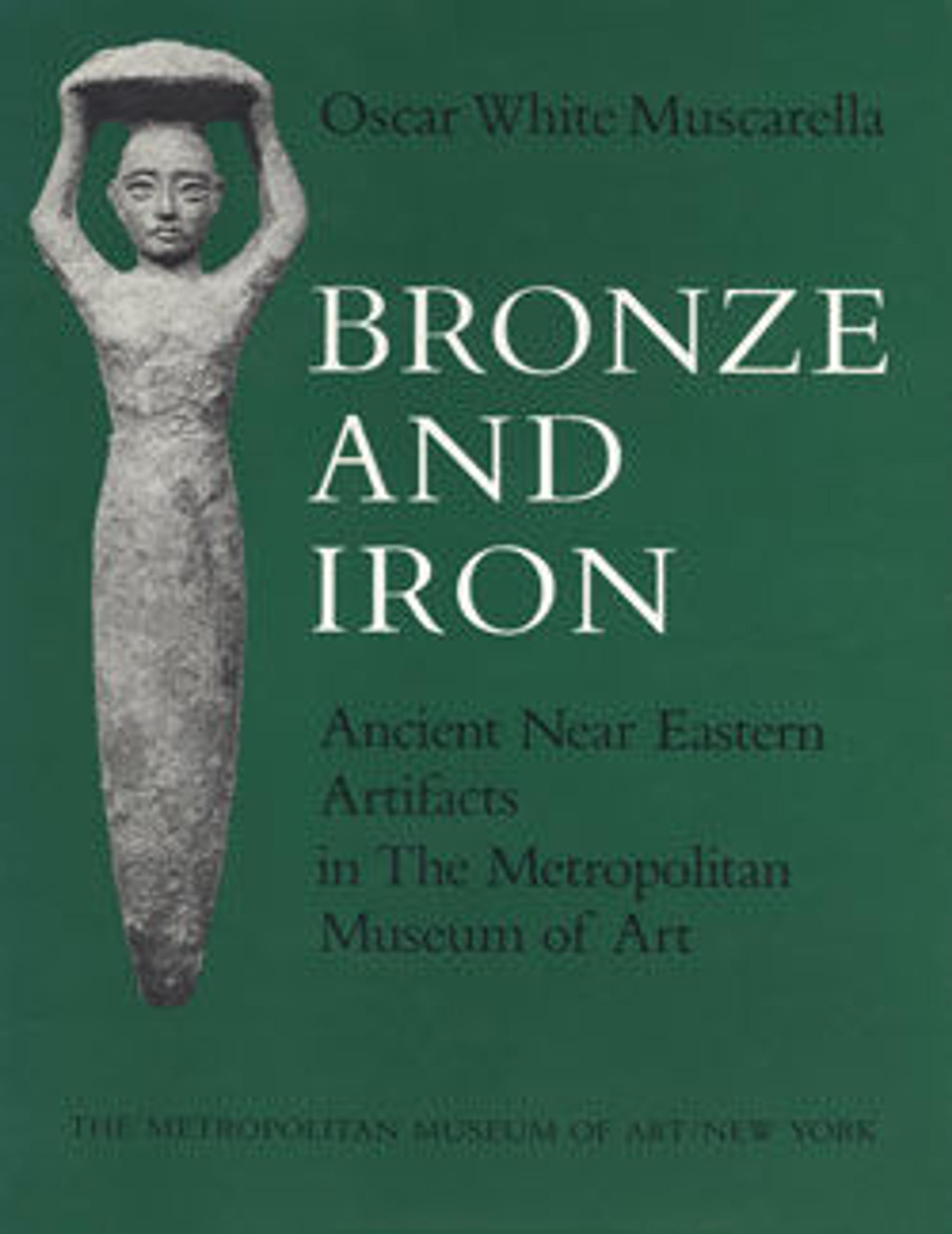Spouted vessel
This bronze pitcher has a globular body, a flat base, a cylindrical neck, a flaring rim and a long spout in the shape of an S-curve. A basket handle is attached to the rim with two rivets with rounded heads. The spout is attached to the body of the pitcher with thirteen rivets. The back of the pitcher is decorated with a plaque showing a winged male human figure, facing frontally. He wears a long robe, and has a large nose, small eyes and mouth, a beard, and ears or rolls of hair that project upwards from the sides of his head. The plaque is also attached to the pitcher with rivets. The body of the pitcher was made by hammering, whereas the spout and plaque were cast in molds and engraved.
Although pitchers of this type are typically attributed to Luristan in the Zagros Mountains, the form is paralleled in both bronze and ceramic across western Iran in the late second and early first millennia B.C. Bronze examples have been found at Hasanlu, Marlik, Sialk, Hamadan, and Tepe Guran in Luristan. The pitcher from Hamadan, which survives only in fragments, is arguably the closest parallel, depending on how it is reconstructed. These vessels all suggest an early Iron Age date for this pitcher, probably in the 9th or 8th century B.C.
Presumably this pitcher was used to pour a liquid containing dregs, such as wine, since the round body and long spout would prevent the dregs from ending up in the cup. In some cases spouted pitchers like this are found in graves along with cups, suggesting they were used in a funerary banquet or ritual before being placed in the grave.
Although pitchers of this type are typically attributed to Luristan in the Zagros Mountains, the form is paralleled in both bronze and ceramic across western Iran in the late second and early first millennia B.C. Bronze examples have been found at Hasanlu, Marlik, Sialk, Hamadan, and Tepe Guran in Luristan. The pitcher from Hamadan, which survives only in fragments, is arguably the closest parallel, depending on how it is reconstructed. These vessels all suggest an early Iron Age date for this pitcher, probably in the 9th or 8th century B.C.
Presumably this pitcher was used to pour a liquid containing dregs, such as wine, since the round body and long spout would prevent the dregs from ending up in the cup. In some cases spouted pitchers like this are found in graves along with cups, suggesting they were used in a funerary banquet or ritual before being placed in the grave.
Artwork Details
- Title:Spouted vessel
- Period:Iron Age II-III
- Date:ca. 9th–8th century BCE
- Geography:Western Iran
- Culture:Iran
- Medium:Bronze
- Dimensions:8.82 x 7.76 in. (22.4 x 19.71 cm)
- Credit Line:Edith Perry Chapman Fund, 1947
- Object Number:47.32.1
- Curatorial Department: Ancient West Asian Art
More Artwork
Research Resources
The Met provides unparalleled resources for research and welcomes an international community of students and scholars. The Met's Open Access API is where creators and researchers can connect to the The Met collection. Open Access data and public domain images are available for unrestricted commercial and noncommercial use without permission or fee.
To request images under copyright and other restrictions, please use this Image Request form.
Feedback
We continue to research and examine historical and cultural context for objects in The Met collection. If you have comments or questions about this object record, please contact us using the form below. The Museum looks forward to receiving your comments.
